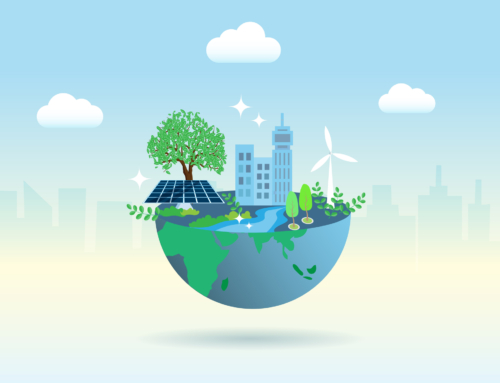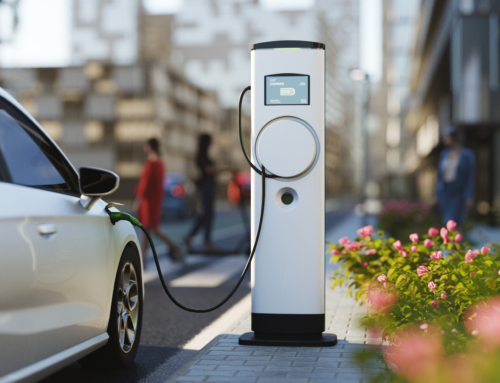Thanks to our newfound, yet urgent, desire to shape a more sustainable future for our planet and astounding innovations in technology, the energy market has seen some pretty significant changes over the past few decades. Where the electricity we are getting to power our homes and businesses today varies tremendously from where we were getting it throughout the 20th century. The biggest shift we have seen globally is a gradual transition to renewable sources.
In decades to come, the energy landscape is anticipated to evolve even more. The question that we will explore in this post is the following: What will be our future sources of energy?
Before we dive into this topic – let’s first establish what renewable energy is and the types of renewable energy sources currently available.
What is Considered Renewable Energy?
Renewable energy very simply refers to the energy found in natural resources like sunlight, air, and water. These renewable energy resources are constantly created and renewed by the earth and will never run out—unlike traditional energy from fossil fuels.
Although renewable resources might create some pollution during their construction or manufacturing process, their overall environmental impact is much lighter than traditional energy created by burning fossil fuels. The cost of these resources has continued to lower as technology improves.
Types of Renewable Energy
The top 5 sources of renewable energy are:
- Solar energy
- Wind energy
- Geothermal power
- Hydroelectric power
- Bioenergy
The Growth of Renewable Energy
As we highlighted earlier in this post, where we get our energy and how we source the electricity powering our homes and businesses continue to fluctuate. The growth of the renewable energy industry landscape can largely be attributed to falling technology costs and rising environmental concerns. As such, reliance on coal is expected to decline in the future. Meanwhile, natural gas is expected to grow, and consumer demand for cleaner sources and processes is also expected to increase.
Renewable energy sources are all expected to rise in the future. From wind and solar to geothermal and hydroelectric, demand for renewable energy is gaining steam.
Presently, renewable energy resources account for 26% of the world’s electricity, but this share is expected to hit 30% by 2024, according to the International Energy Agency (IEA). THE IEA’s market update report indicates that by 2024, the world’s renewable electricity capacity will grow by 1200 GW.
The U.S. Renewable Energy Landscape
The renewable energy industry in the United States has experienced an exponential rise over the past decade. In 2020, renewable energy sources accounted for about 12% of total U.S. energy consumption and about 20% of electricity generation. Additionally, in 2020, roughly 4.01 trillion kilowatt hours (kWh) of electricity were generated at utility-scale electricity generation facilities in the United States. About 60% of this electricity generation was from fossil fuels—coal, natural gas, petroleum, and other gases. About 20% was from nuclear energy, and about 20% was from renewable energy sources.
Solar Energy
The projected leader in renewable energy in the foreseeable future is undoubtedly solar. The United States Energy Information Administration projects solar energy production to boom, growing almost 250 percent from 700 billion kilowatt-hours in 2018 to 1.7 trillion kilowatt hours by 2050.
The reasons for this massive growth mainly center on continued advancement in solar energy technology to further drive down production costs per unit as well as the building of economies of scale as production facilities grow to produce more and more solar panels and equipment. More solar friendly regulation and greater awareness and adoption among consumers are also expected to help solar energy take the lead in renewable energy production in the future.
The fact that solar capacity can be built right onto a home or business adds to the technology’s allure and helps solar grow in adoption one building at a time. The technology has taken significant leaps in recent years and is expected to continue to do so going forward. Solar panels are becoming more affordable and smaller. Solar panels are morphing into solar roof tiles. Parking structures and office building roofs are prime real estate for hosting solar technology. Opportunity for solar installation is everywhere.
Wind Power
The adoption of wind power is also becoming more prominent due to increased capacity.
Onshore wind capacity is expected to expand by 57% to 850 GW by 2024.
Offshore wind capacity is forecast to increase almost threefold to 65 GW by 2024, representing almost 10% of total world wind generation. While the European Union currently accounts for half of global offshore wind capacity expansion, the first large US capacity additions are also expected during the coming years.
Geothermal Energy
As demand for efficient heating solutions increases, the US market for geothermal heat pumps is anticipated to surpass $2 billion by 2024. Updated building codes in commercial and residential real estates will encourage a shift to renewable heating and electricity systems. In fact, according to the Department of Energy, geothermal solutions will generate 8.5% of all electricity in the US by 2050.
Hydroelectricity
According to the IEA’s Short-Term Energy Outlook (STEO), hydropower plants are forecasted to generate 267 million megawatt-hours of electricity in 2021, half of which will come from the Northwestern region of the United States. Hydroelectricity will account for 7% of U.S. electricity generation in 2021, almost one percentage point lower than in 2020.
What Can I do to Contribute to Renewable Energy?
The future of renewable energy is promising. From advancements in technology, decreases in costs, and increases in demand, clean energy, led by solar, is not only here to stay; it’s here to grow. As more and more consumers demand clean and environmentally responsible energy sources, renewables will help meet that demand. Energy companies will need to be there to fill a void created by outdated 20th-century technology.
Your energy choice matters. You CAN be a part of the future of energy. Visit Spring Power & Gas to learn more about our innovative electricity and natural gas products and how you can offset your usage with wind RECs and carbon offsets.




![Top 11 Sustainable Building Practices for Eco-Homes [Plus 5 Sustainable Materials]](https://springpowerandgas.us/wp-content/uploads/2023/02/iStock-181062267-500x383.jpg)

